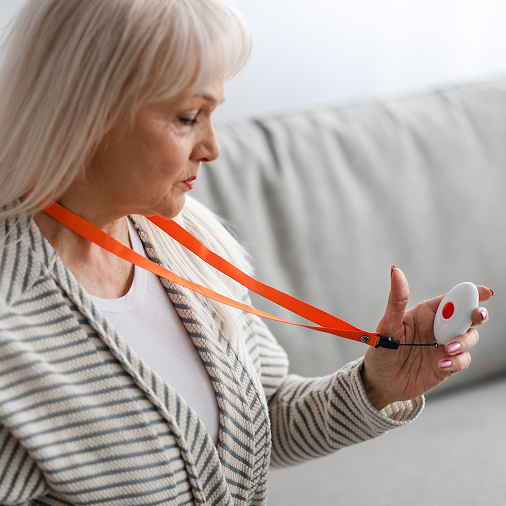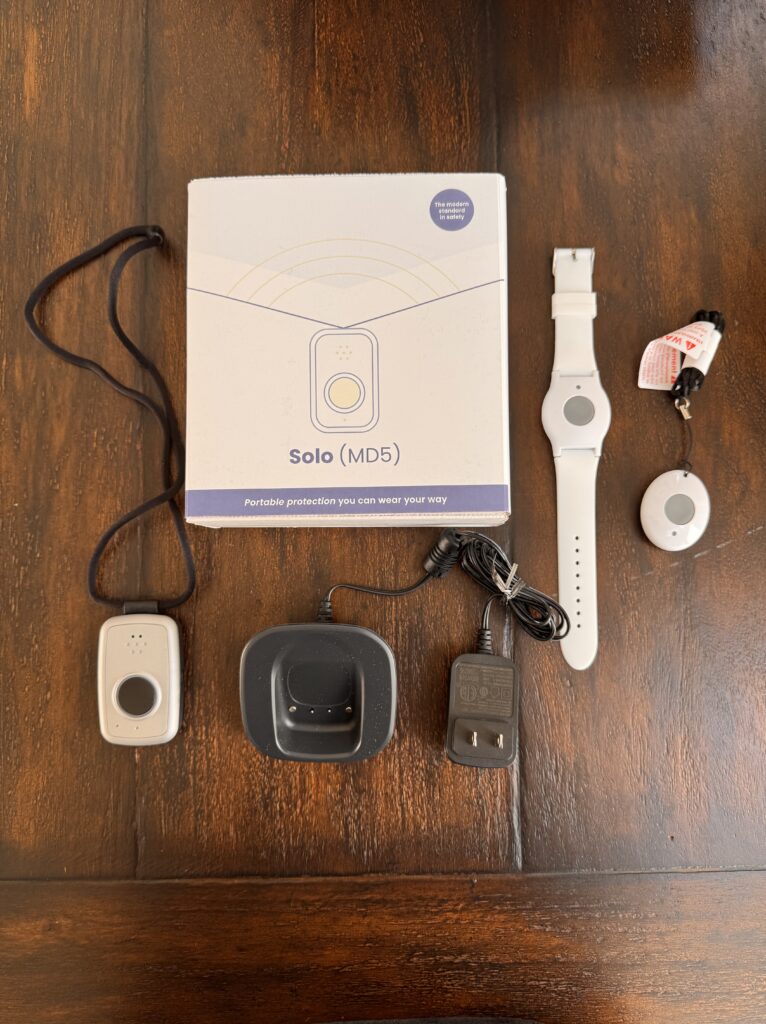Best Medical Alert Providers of 2025
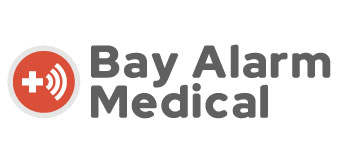
9.8
- Most popular choice among readers!
- Plans from $27.95/mo
- Ultra-fast response times of under 12 seconds
- Ranked #1 for best customer service
- No hidden costs or activation fees
- Free Shipping + Free Month on Select Plans
- Full suite of in-home, mobile, and smartwatch devices
Bottom Line
With pricing plans that fit any budget and over 70 years of proven life-saving dispatches, Bay Alarm Medical is a premiere medical alert provider that you can trust and rely on.

9.4
- Competitive pricing
- Plans from $27.95/mo
- Reliable and easy-to-use equipment
- Recommended by leading hospitals and caregivers
- No long term contract
Bottom Line
Medical Alert delivers trustworthy and dependable 24/7 medical monitoring. Get a free month, free lockbox, and free shipping when you sign up for an annual plan.
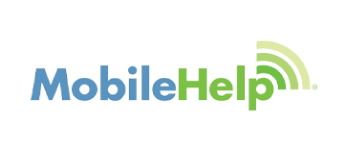
9.3
- Over 20 years of offering reliable, affordable service
- No Contracts or Hidden fees
- Protection starting at less than $1 a day
- Free month + shipping + lockbox on annual plans
- Free equipment to use
Bottom Line
MobileHelp stands out by combining affordability with full-featured protection—offering free equipment, no long-term contracts, and 24/7 monitoring starting at just $24.95/month.

9.0
- Trusted brand name with 40 years experience
- Pioneers of Auto Fall Detection
- One Year Warranty on Mobile GPS Device
- Professional Installation Available
Bottom Line
If you’re looking for a trusted medical alert system and willing to pay a little extra for a known brand in healthcare, look no further than Lifeline.
Medical alert systems offer peace of mind and security for seniors and their families. These devices act as a crucial connection for individuals who may need immediate medical assistance.
A medical alert system is designed to provide fast, accessible help to people facing urgent health issues. It typically combines wearable devices with a central monitoring service for quick responses.
Medical alert systems are particularly vital when falls occur. The first hour after a fall, often referred to as the “golden hour,” is critical. Studies show that 62% of fall victims who don’t receive help during this time may lose their ability to live independently. As noted by Adult-Gerontology Nurse Practitioner Jenny Sanford, “a good fall detection system may help saves lives.”
Beyond fall response, those with medical alert subscriptions often spend fewer days in the hospital and reduce overall healthcare costs. While the benefits of these systems are clear, the wide variety of available options can make choosing the right one challenging.
Whether you’re searching for budget-friendly options, advanced mobile features, or systems tailored for home use, our reviews will guide you to the best choice. Check out our video below where we hands-on show you the different types of medical alert systems: in-home, mobile, and watches so you can decide which one works best for you. You can also find our top recommended systems below. Take your time exploring!
ARVE error: Invalid datetime: 2024.10.18
How We Tested: Hands-On Testing + In-Depth Reviews
Our team invested 12,000 hours researching 16 leading medical alert brands to pinpoint the most effective systems. Following this, we dedicated over 520 hours to hands-on testing. We conducted undercover purchases, acquired each system ourselves, and scrutinized every aspect of the user experience—from purchase and installation to practical use, numerous button activations, and testing the automatic fall detection feature.
We meticulously evaluated both the technical capabilities of the systems and the quality of customer service from the companies. During our interactions, we identified brands that provided straightforward evaluations as opposed to those pushing for higher subscription fees. We highlighted companies employing aggressive sales strategies, along with issues like high initial costs, restocking fees, and complex return policies. In our fall simulations, we assessed the responsiveness and follow-up procedures of the emergency operators.
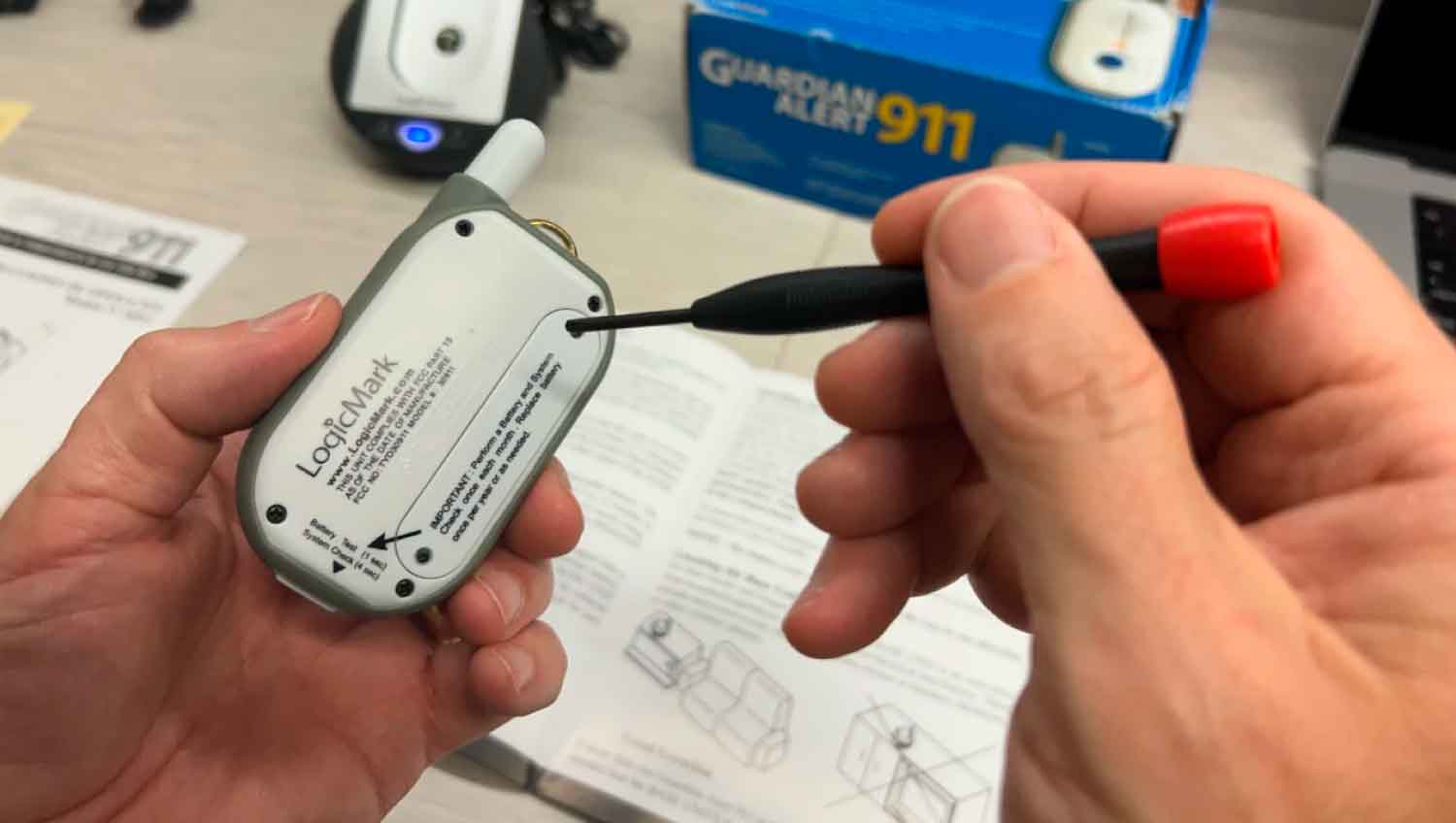
Best Medical Alert Systems Comparison Chart
| Monthly Rates | Activation Fees | Shipping Fees | Trial Period | See Plans | Full Review | |
|---|---|---|---|---|---|---|
| Bay Alarm Medical | $27.95/mo - $64.95/mo | None | $15 - Free for quarterly & annual subscriptions | 15 days | SHOP | Read Review |
| MedicalAlert | $27.95/mo - $47.95/mo | $99.95 | $24.95 - Free for semi-annual & annual subscriptions | None | SHOP | Read Review |
| MobileHelp | $24.95/mo - $49.95/mo | None | $12.50 - Free for annual subscriptions | 15 days | SHOP | Read Review |
| Lifeline | $29.95/mo - $44.95/mo | $99.95 | $29.95 - Free for semi-annual & annual subscriptions | None | SHOP | Read Review |
| Lifestation | $35.95/mo - $47.95/mo | $99.95 | $12.50 - Free for semi-annual & annual subscriptions | 30 days | SHOP | Read Review |
| GetSafe | $29.95/mo - $39.95/mo | None | $0 - Free Shipping across all products | 15 days | SHOP | Read Review |
| ADT Medical Alert | $31.99/mo - $41.99/mo | $99 | $29.99 - Free for quarterly & annual subscriptions | None | SHOP | Read Review |
The Best Medical Life Alert Systems of 2025
- Bay Alarm Medical - Best Service & Pricing
- Medical Alert Review - Best for Ease of Use
- MobileHelp Review - Best Value & Bundle Options
- Lifeline Review - Best for Pro Install
- ADT Medical Alert Review - Best for Brand Reputation
- LifeStation Review - Best for In-House Monitoring
- GetSafe Medical Alert Review - Best System for Inside the Home
Bay Alarm Medical Overview

You’ll Like:
- Most Popular Choice Among Readers
- Ultra-fast response times of under 12 seconds
- Plans starting from $24.95/mo
- Ranked #1 for best customer service
- No hidden fees or contracts
- Free Shipping + Free Month on Select Plans
Cons:
- Automatic Fall Detection requires $30 equipment fee for SOS Home & SOS All-In-One
Save up to $30 on a mobile device purchase. Plans from $24.95/mo. Get free shipping and a free month with select quarterly and annual payment plans. No hidden costs. No activation fees. No long-term contracts. Click to Get Started.
After hearing numerous glowing reviews about Bay Alarm Medical’s exceptional buying experience, we decided to give it a try ourselves—and the feedback didn’t disappoint. From the moment we reached out, our care representative was warm, knowledgeable, and eager to understand our specific needs. Initially, we were a bit hesitant about the process, but the representative’s genuine concern quickly put us at ease.
They took the time to thoroughly discuss everything, including symptoms and comfort preferences for our loved one, and only recommended what was necessary. Since seniors can have strong preferences when it comes to medical alert devices, it was great to see Bay Alarm Medical offer a variety of options—whether a discreet necklace or a bracelet. The sales team was genuinely helpful and never pressured us into making decisions. Their approach earned our trust right away. It was also reassuring that, even though we were willing to pay for extras, they made sure we double-checked that our parents were truly comfortable with any add-ons.
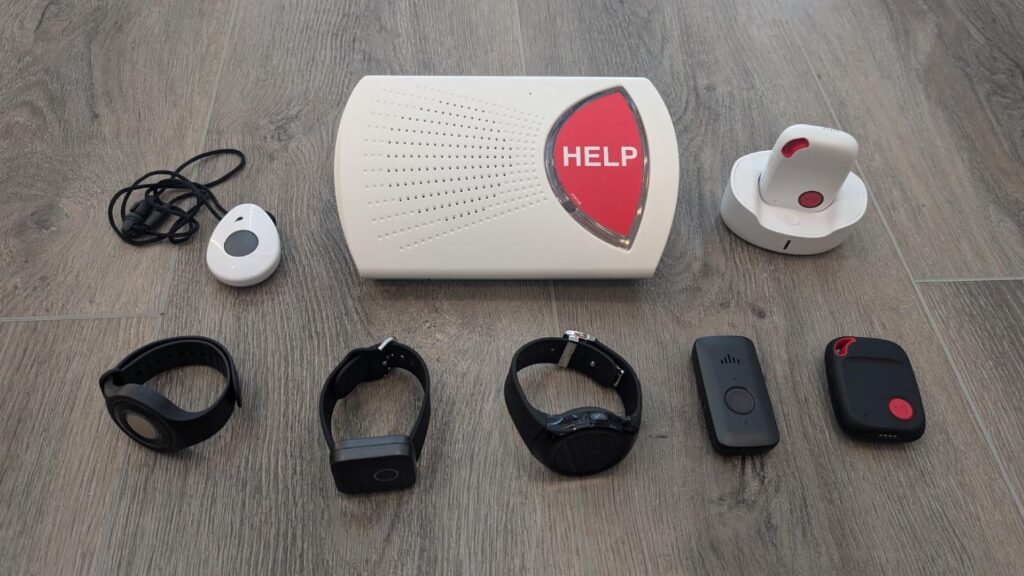
Our order arrived promptly within just a few days, and setting up the system was a breeze. The included Quick Start guide was easy to follow, even for those with limited vision. The response time was impressively fast. On average, during our testing, we connected with an operator in about 12 seconds—slightly faster than other systems we tried. Each time we pressed the button, the operator greeted us warmly, which helped us feel safe and reassured.
We tested all four of Bay Alarm Medical’s products, including the in-home system (both landline and cellular), SOS All-In-One, SOS Mobile, and the SOS Smartwatch. Every system worked flawlessly, and we were particularly pleased with the mobile GPS tracking feature, which provided accurate real-time locations. The fall detection feature was also reliable, with no false alarms over two days of testing.
Overall, we were thoroughly impressed with Bay Alarm Medical’s service. With affordable pricing and a wide range of options, they have easily become our top-rated medical alert system for 2024. To watch an unboxing video and see the product for yourself, check out this three-minute clip by an emergency room nurse who knows first hand how important medical alert systems are.
Medical Alert Review Overview

You’ll Like:
- Packages starting at $27.95/mo
- Competitive pricing
- Reliable and easy-to-use equipment
- Recommended by hospitals
- No long-term contracts
Cons:
- Requires $99.95 Programming Fee
- Must pre-pay for annual plans to get lowest monthly pricing
- Get free shipping and a free lockbox on all plans when you select semi-annual or annual subscriptions. Click here to get started.
Medical Alert by Connect America is one of the leading providers of personal emergency response systems (PERS) in the country, serving both private-pay individuals and an extensive network of healthcare providers. As a longstanding and trusted player in the field, they have helped shaped the industry to what it is today.
In the 1990s and early 2000s, companies like Life Alert and Lifeline dominated the market, often locking seniors into lengthy 3-year contracts. Connect America revolutionized the space by allowing clients to cancel their service at any time, a feature that has since become standard across most top providers.
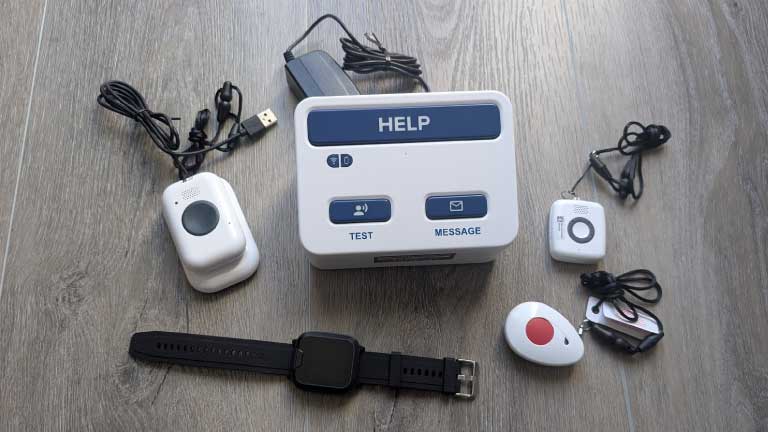
If you’re seeking a dependable and straightforward home system, Medical Alert is an excellent option. Their systems are user-friendly and easy to set up, with lightweight help buttons and long-lasting batteries. Medical Alert has also recently added a new smartwatch to their lineup that’s simple to use and good on battery life.
You can also add fall detection for an extra $10 per month, a highly recommended feature given that one in four Americans over 65 experience falls each year, with many leading to injuries requiring medical care.
Overall, Medical Alert is a well-established and reliable company. Additionally, they offer monitoring services beyond the U.S. borders, adding extra value for customers.
MobileHelp Review Overview

You’ll Like:
- Best Value and Bundle Options
- Free Equipment, Free Month, Free Shipping, Free Lockbox
- Affordable Pricing with Full-Featured Protection
- No Activation Fees
- No Long-Term Contracts
Cons:
- Subscription price isn’t locked unless you purchase the Connect Premium plan
- No Built-In Warranty Protection
Very few medical alert companies design and manufacture their equipment in-house and MobileHelp is one of them. They offer a full suite of AT&T 3G cellular based systems and also white label their equipment for other brands. If you like the form factor of their equipment, you’re best bet is to go with MobileHelp.
Additionally, MobileHelp offers an in-home landline medical alert. Although hardwired landlines are starting to diminish in the US, it’s still the most reliable source of communication especially during a power outage.This is a great option for rural customers with spotty AT&T cellular coverage.
During our mystery shop, the sales rep was helpful and straight to the point. He asked if my loved one had experienced a fall and when we said no, he asked which service we wanted, to which we answered both the MobileHelp Duo package, and then proceeded to take our information and credit card #. We suppose the lack of a sales pitch was good but the call was a bit too “business”. We like that MobileHelp provides free ground shipping.
Both devices were very easy to setup. By far our favorite thing about the package was their silicone pendant wrist strap. Very comfortable, light and easy to wear. The response time from the moment the button was pushed to hearing someone on the loudspeaker was just a hair slower than Bay Alarm Medical but still fast.
In conclusion, if you’re looking for the latest medical alert technology, MobileHelp is a highly recommended provider. Very good buying experience and a good choice of device options that will fit your loved one’s protection needs.
Lifeline Review Overview

You’ll Like:
- Trusted brand name with 40 years experience
- Pioneers of Auto Fall Detection
- One Year Warranty on Mobile GPS Device
- Professional Installation Available
Cons:
- Not as many device options as other brands
- Requires $99.95 Setup Fee
Get free shipping and a free lockbox on all annual subscription plans. Click here to get started.
Lifeline has earned a spot on our 2025 Best list with its user-friendly and dependable alert systems. For those seeking a well-known brand in healthcare and are open to paying a bit more, Lifeline’s medical alert devices are a solid choice.
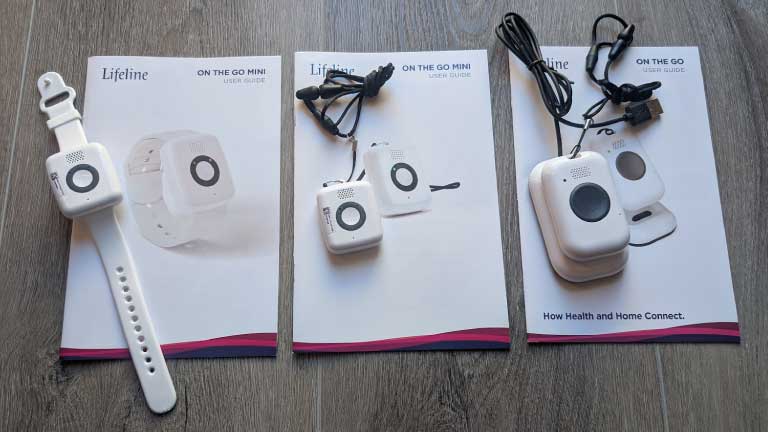
Known for their simplicity in setup, maintenance, and emergency use, we also suggest adding Auto Fall Detection if your loved ones are at risk of falls or blackouts.
As a premium service backed by years of proven reliability, we confidently recommend Lifeline and are pleased to feature it among our top picks this year.
ADT Medical Alert Review Overview

You’ll Like:
- Reputable brand name
- Trained 24/7 responders with US-Based call centers
- Best option for existing ADT home security customers
Cons:
- Requires a $99 activation fee
- Must sign up for annual to get discounts
Take $5 off monthly monitoring on select plans plus free 2-day shipping and free lockbox with you choose annual billing. Click here to get started.
ADT’s Medical Alert systems provide 24/7 monitoring and emergency assistance for seniors or individuals with medical conditions who might need help during a fall or other health emergencies. Users wear a device, such as a pendant or wristband, with a button that directly connects them to ADT’s monitoring center when pressed.
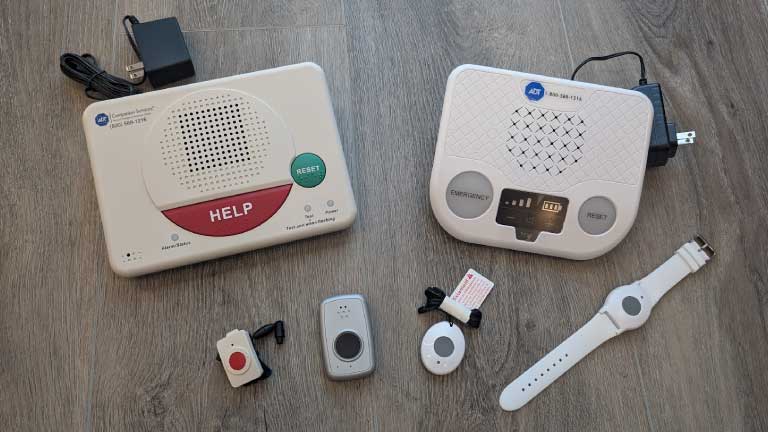
Among the top five systems we evaluated, ADT’s equipment was the least impressive. The in-home unit had a noticeable yellowish tint, and the mobile device felt cheaply made with its plasticky appearance. Despite this, ADT remains a trusted name when it comes to monitoring services. The monitoring center assesses the situation and dispatches emergency aid if necessary. The systems also come with additional features such as fall detection and GPS tracking for added security.
ADT offers a variety of subscription plans tailored to different needs and budgets, allowing users to choose a package that fits their preferences.
LifeStation Review Overview
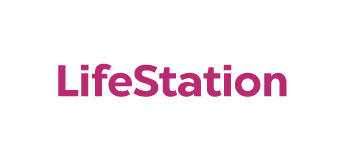
Black Friday Sale: Free Smartwatch. No Device Fee with any Smartwatch plan purchase
Based in New Jersey, LifeStation delivers 24/7 medical monitoring all at a fair price with great terms. They monitor their customers in-house (Affiliated Monitoring) and have a proven track record of protecting seniors. LifeStation is even recommended by some health insurance plans, like Aetna who offers their members a discount on monthly service.
LifeStation has a strong history in the industry.
If you’re looking for a reliable and simple in-home system, LifeStation fits the bill. Their in-home systems are easy-to-install, easy to use, and incredibly reliable. The alert buttons are light and also have long-lasting batteries. When setting up the system, LifeStation allows an unlimited number of relatives or friends on the emergency call list and they also allow you to set up instructions for how you want emergencies handled!
LifeStation is a very reputable company that’s been around for quite a long time. They don’t have the prestige or testimonials like our higher-ranked providers have but when the button is pushed, you can be sure help will arrive.
GetSafe Medical Alert Review Overview
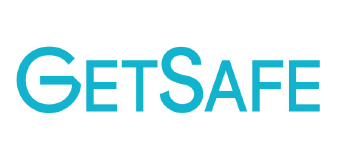
You’ll Like:
- Voice-Activated medical alert system you don’t have to wear!
- Aesthetically pleasing, modern-looking hardware
- 4GLTE Cellular for homes without landlines
- You own the equipment = cheaper monthly subscription
Cons:
- Larger homes can lead to higher upfront equipment fees
- No mobile devices
Take 10% off all hardware purchases and get free shipping across on plans. Click here to get started.
With extensive experience in wireless home security, GetSafe is expanding its services by introducing medical alert systems to its lineup. From the start, it’s evident that GetSafe stands out in two key areas.
First is its unique system design. Do you have loved ones who resist wearing a medical alert button? GetSafe’s medical alert system operates without requiring any wearable device. The goal is to create a safety net throughout the home using wall-mounted buttons. This setup is ideal for individuals who only need assistance while at home, as the devices do not function outside the house. In addition to providing practical safety, the hardware is sleek and easy to install, offering a user-friendly experience without an obvious “emergency” look.
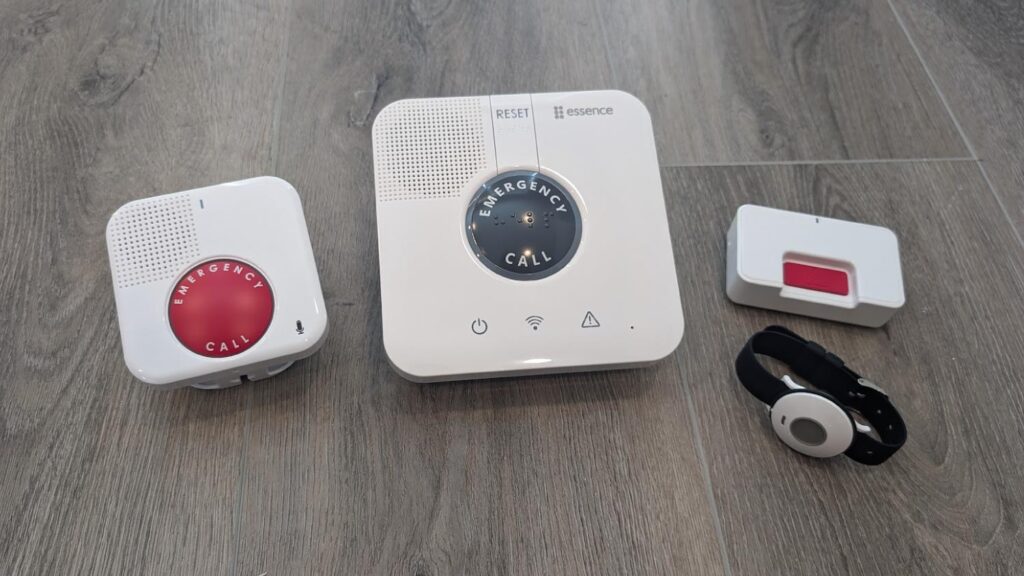 The second differentiator is GetSafe’s pricing approach. Most medical alert providers increase monthly fees as more devices are added. GetSafe, however, keeps monitoring costs fixed at $27.95 per month, with customers purchasing additional devices upfront. The company offers three straightforward packages based on home size, making it easy to understand how much coverage you need.
The second differentiator is GetSafe’s pricing approach. Most medical alert providers increase monthly fees as more devices are added. GetSafe, however, keeps monitoring costs fixed at $27.95 per month, with customers purchasing additional devices upfront. The company offers three straightforward packages based on home size, making it easy to understand how much coverage you need.
GetSafe has successfully developed a system that allows users to access 24/7 help without the inconvenience of wearing a button. We applaud their effort in creating a stylish, unobtrusive, and seamless medical alert solution.
How We Chose the Best Companies
Our reviews are based on our own first-person experience involving personal hands-on testing of the product. In total, our ratings reflect over 350 hours of research and testing. Read below to learn about our hands-on testing.Hand's-On Testing
We acquired the top medical alert systems, set them up, and conducted thorough hands-on testing of both the equipment and its monitoring services.
Our assessment encompasses the complete customer experience, from the purchasing process with a sales representative to the evaluation of the company’s service quality after the purchase. Since most medical alert systems offer similar features, the quality of service—such as engaging with a helpful and friendly representative—often sets one company apart from another.
For each type of medical alert system (in-home, mobile, smartwatch), our review included the following criteria:
- Customer Service
- System Hardware
- Cost & Value
- Reputation
Customer Service
The 24/7 call center is the cornerstone of a medical alert system. It dictates the service quality from your chosen brand and is often the deciding factor in your overall satisfaction. We scrutinized each company’s service through every stage of ownership:
Purchase Process: We expected companies provide clear pricing, no hidden fees, no contracts, no aggressive sales tactics, and a quick, easy returns process. Our assessments began with a test call to the sales department, posing specific questions. We judged the responses on the rep’s knowledge, accuracy, and friendliness.
24/7 Monitoring: The heart of any medical alert service is its 24/7 emergency monitoring center, dedicated to immediate assistance. The top performers were based in the USA, CSAA 5-Diamond Certified, UL-Listed, and specifically trained to aid elderly users.
Returns & Refunds: This is where the best companies stand out. The returns process should be straightforward, fair, and fast. We returned each system post-testing and requested refunds, evaluating the simplicity of the process. Did the company make it easy or impose hurdles? How quickly did we get our money back?
System Hardware
We conducted thorough hands-on testing of the top medical alert systems, mimicking real-life scenarios. Our evaluation and testing included every aspect of the systems:
Unboxing & Setup: We set up each system, assessing the ease of the process. Was it user-friendly to get started? Did the system come fully charged? Did the company request crucial health information, such as your medical conditions and medications? This data allows operators to relay important details to first responders in an emergency.
Features: We examined all system features, including apps (for smartwatches) and online caregiver portals. Were the apps and portals intuitive and reliable? Did they offer practical utility?
Emergency Alerts: We triggered emergency alerts on each system, measuring response times and evaluating the call center’s service quality. For systems with fall detection, we simulated falls to test the alarm triggers.
Charging & Maintenance: For mobile and smartwatch medical alerts, battery life is crucial. We tested how long the battery held a charge. Was the system easy to charge? Did it provide low battery warnings?
Cost & Value
Price is a crucial factor when selecting a medical alert system, especially for American seniors on fixed incomes. However, pricing can be a mix of base costs, additional options, and monthly monitoring fees. Some companies also offer discounts for prepaying quarterly or annually.
We simplified this process by clearly outlining the costs and available options for each system. Most importantly, we examined the life cycle cost of each medical alert system. Some systems have a low initial price but high monthly fees. To provide a complete picture, we evaluated the 1-year and 2-year total ownership costs.
While price matters, we also considered the overall value. Systems with more features often come at a higher price, so we analyzed the cost-benefit ratio of these additional features.
Reputation
A medical alert company’s reputation is important, as they’re in the business of saving lives. Not only does MedicalAlertBuyersGuide.org provide original real reviews of each company from our personal testing experience, but we also scour the web for various review platforms, including the BBB, Google, and Amazon (if applicable) to back up our rankings.
Also, we made sure to review the company’s contract, trial period, and refund policy before adding them to our list as these are all testaments to a company’s reputation.
Lastly, we excluded any companies that required customers to commit to a lengthy contract. No company that locks you into a contract deserves to be considered the best in the industry.
Find the Best System for Your Needs
In-Home vs mobile? Landline vs cellular? Wearable buttons vs wall buttons? Automatic fall detection and GPS tracking? These are just some of the options you have when choosing the right medical alert system. This page is dedicated to choosing the best overall brand but this website also has guides if you wish to dig a little deeper. Check them out:
- Best Medical Alert Systems with Landlines
- Best Mobile Medical Alert Systems
- Best Medical Alert Smartwatches
- Best No Fee Medical Alert Systems
- Best All-In-One Medical Alert Systems (coming soon)
Budgeting for Your Medical Alert System
When choosing a medical alert system, we’d all love to have access to every advanced feature without worrying about the cost. However, with approximately 40% of older Americans relying solely on Social Security, budget plays a crucial role in decision-making.
We understand that families on fixed incomes need practical, cost-effective solutions. That’s why setting a budget and prioritizing essential features is the smartest approach. To simplify this process, we’ve conducted a comprehensive cost analysis to help you find a system that fits your financial situation while providing reliable emergency protection.
Monitoring Costs
The most critical factor in a medical alert system is its 24/7 professional monitoring service. This is the heart of the system, ensuring that a live agent is always available to respond to emergencies.
- In-home medical alert systems: Typically cost $25-$30 per month for monitoring.
- Mobile medical alert systems: Generally range from $40-$50 per month due to the added cost of cellular connectivity and GPS tracking.
- Automatic Fall Detection: A highly recommended add-on, usually costing an additional $10 per month.
Most top providers offer flexible pricing solutions to accommodate different budgets, ensuring that customers get the protection they need without overspending.
Equipment Costs
Most in-home medical alert systems include a free base unit upon sign-up, though the equipment must be returned if the service is canceled. The wearable emergency buttons used with these systems are long-lasting but may need replacing every few years, typically costing $20-$30 per button.
For mobile alert devices, there is usually an upfront cost for the hardware. These devices are purchased outright and do not need to be returned upon cancellation. Expect to pay anywhere from $80-$200 for a mobile unit.
Since mobile devices are used daily and undergo more wear and tear, we highly recommend purchasing an extended warranty plan for added protection—much like you would for a smartphone.
Activation Costs
Some companies charge an activation fee to offset the cost of providing the device. Our research found that most providers will charge either an equipment fee or an activation fee at sign-up.
Best value tip: Choose a provider that charges an equipment fee instead of an activation fee, as this ensures you are paying for a physical product rather than a non-refundable setup charge.
Long Term Contracts
One of the biggest red flags when choosing a medical alert provider is long-term contracts. The best companies allow customers to cancel anytime without hefty penalties.
Many providers offer discounts for pre-paying for a year, but always check the cancellation policy.
Our top provider, Bay Alarm Medical, prorates any unused months, ensuring customers don’t lose money if they cancel due to moving into assisted living or other life changes.
So How Much Will I Be Spending?
Based on our latest surveys:
In-home medical alert system users typically spend $30-$40 per month.
Mobile medical alert system users spend $40-$50 per month plus an additional $80-$150 for the mobile device of their choice.
By understanding these costs upfront, you can find a medical alert system that fits your budget while ensuring your safety and peace of mind.
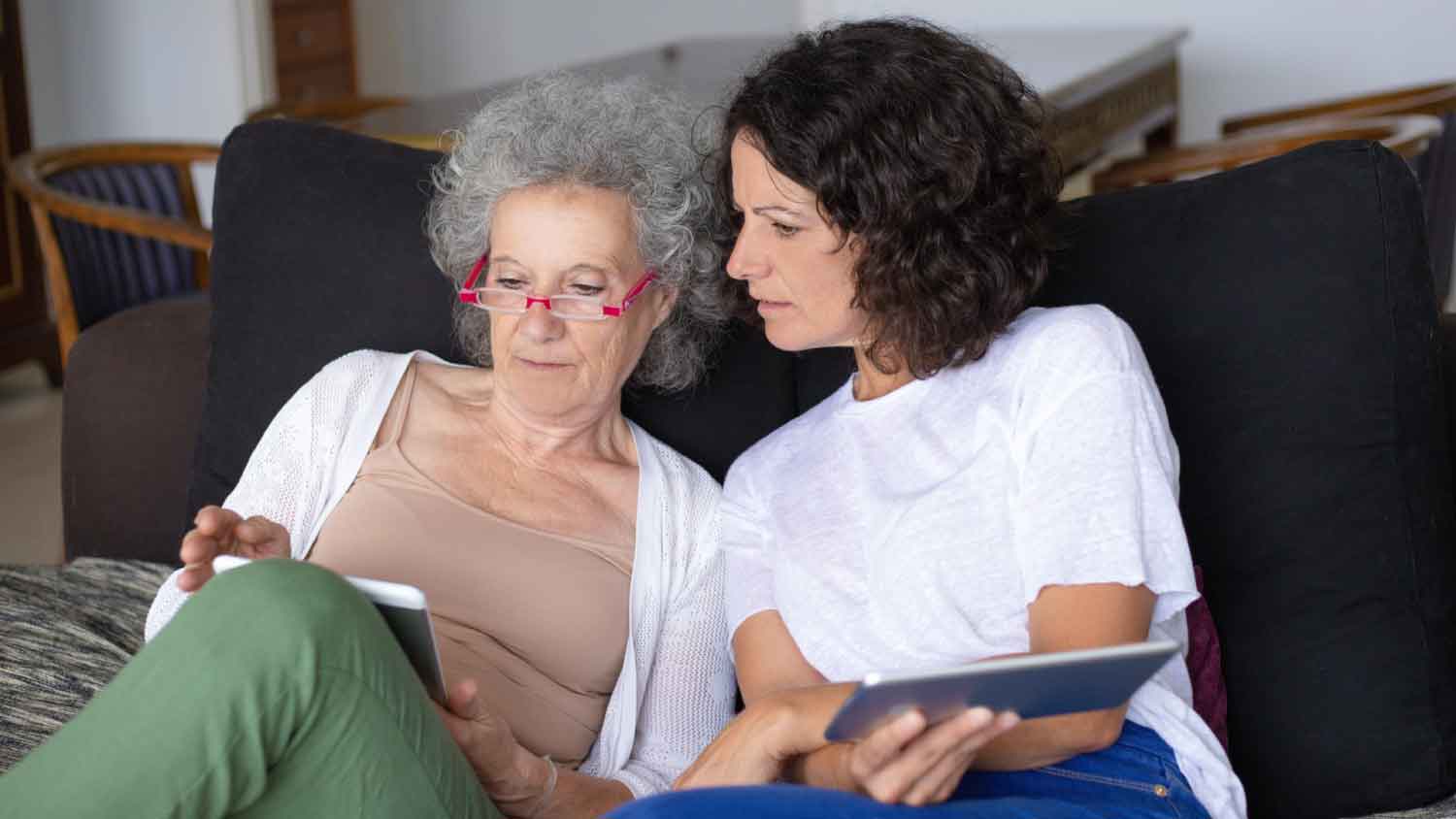
Here's How a Medical Alert System Works
A medical alert system is designed to provide quick and easy assistance to individuals who may need urgent medical attention. It works through a combination of wearable devices and a centralized monitoring system.
Here’s a simple breakdown of how it operates:
1. Press the Button on Your Device
A medical alert system includes a wearable device, such as a pendant or bracelet, with an emergency button. This button is easily accessible and can be pressed by the user in case of an emergency. It serves as a quick and convenient way to send a distress signal for help.
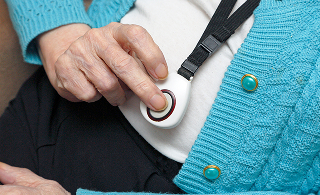
2. Professionally Trained 24/7 Agent Receives Call
When the emergency button is pressed, a distress signal is transmitted to a monitoring center staffed by trained professionals who are available around the clock. They receive the signal and promptly assess the situation. The monitoring center serves as a centralized hub for emergency response, ensuring that help is just a call away at any time of the day or night.

3. Remain Calm and Wait for Help to Arrive
Once notified, appropriate medical professionals will arrive to assess the situation and take care of your needs. If they determine that you need to go to the hospital, they will transport you there fast. Rapid response, under an hour, is important because you’ll experience faster treatment and recovery time. Also, quickly addressing medical issues can reduce medical bills.
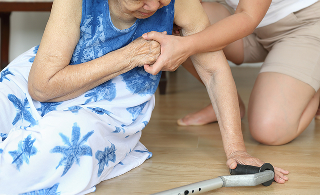
Life-Saving Medical Alert Add-Ons. Widen Your Safety Net!
When you select a medical alert provider, you’ll also need to decide on any additional accessories. This can mean requesting additional buttons for safety. Lock boxes and Vials of Life provide additional protection and are recommended by most providers.
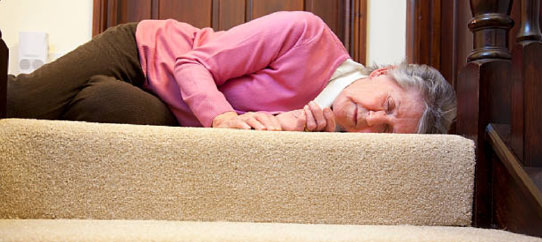
Automatic Fall Detection Buttons
Automatic fall detection has become an indispensable feature of medical alert systems, offering critical benefits that ensure safety and enhance quality of life. Here’s why this technology matters more than ever.
1. Quick Emergency Assistance
Automatic fall detection is designed to recognize when a fall occurs and immediately notify caregivers or emergency services. This swift action ensures help arrives as quickly as possible, minimizing delays in medical intervention. Prompt assistance can be life-saving, reducing the risk of serious complications and promoting faster recovery.
2. Greater Security and Peace of Mind
For older adults or individuals with mobility limitations, automatic fall detection provides an added layer of safety. Knowing that help will be summoned automatically—even if they cannot manually activate an alert—brings significant reassurance. This feature allows users to maintain their independence while offering comfort and confidence to their families and caregivers.
3. Better Health Outcomes
The ability to detect falls and respond quickly contributes to improved healthcare outcomes. Early intervention not only reduces the likelihood of extended hospital stays but also supports faster healing. Furthermore, the data collected by fall detection systems can help identify patterns or recurring risks, allowing caregivers and healthcare providers to implement preventative measures effectively.
In summary, automatic fall detection is a vital component of today’s medical alert systems. By ensuring rapid response, promoting a sense of security, and contributing to improved health outcomes, this feature plays a key role in protecting individuals and supporting their well-being.
![]()
Mobile GPS Device Tracking
When choosing a mobile medical alert system, most options come equipped with location tracking technology. Whether powered by GPS, Wi-Fi Positioning Systems (WiPS), or both, this feature enables caregivers, family members, and monitoring centers to quickly locate the user during emergencies—provided the device is being carried.
Enhancing Safety for Vulnerable Individuals
Location tracking is particularly valuable for those with conditions like Alzheimer’s or dementia, where the risk of wandering and disorientation is a concern. By offering real-time location information, these devices help prevent dangerous situations and ensure that loved ones can be found quickly if they stray from familiar surroundings.
Providing Critical Location Data
While location tracking does depend on the user carrying the device, it can still deliver crucial information about their last known position. This data is invaluable in locating someone who may be lost or in distress, especially in emergencies where every moment counts.
In short, mobile GPS device tracking adds a powerful layer of safety to medical alert systems. By combining real-time location monitoring with geo-fencing and emergency support, this technology helps protect individuals, offering peace of mind to both users and their loved ones.
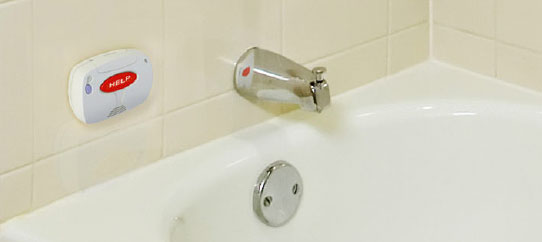
Wall Buttons are Useful
Wall buttons are a practical and popular addition to medical alert systems, especially for individuals who prefer not to wear a personal device or may occasionally forget to put one on. Many users choose to install multiple buttons—often 10 or more—for comprehensive home coverage.
Strategic Placement for Maximum Protection
These buttons are designed to be easily placed in key areas throughout the home, such as bathrooms, staircases, kitchens, and bedrooms. To ensure accessibility, it’s important to position them low enough to be reachable in case of a fall, enhancing safety and usability.
Affordable, Reliable, and Flexible
Wall buttons are not only budget-friendly but also easy to install, requiring no special tools or expertise. Simply stick them where they’re needed. Since they run on batteries rather than needing an outlet, they offer flexibility in placement. Most models feature batteries that last five years or longer, providing long-term reliability.
Boosting Home Safety
By installing several buttons around the home, you can significantly increase overall security and peace of mind. With their affordability, ease of use, and dependable performance, wall buttons are an excellent choice for anyone looking to enhance their medical alert system.
Look into the products at GetSafe Medical Alert Systems, particularly if you do not want to wear a medical alert button.
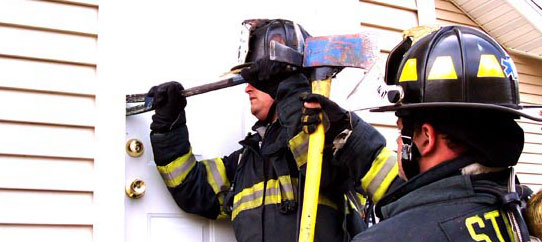
Importance of Lock Boxes
When an alert button is pressed, the top priority is getting help to the individual as quickly as possible. While family members or neighbors are often the first point of contact, critical emergencies may require professional responders, such as EMTs or firefighters, to intervene.
Ensuring Fast and Hassle-Free Access
In emergencies, every second counts. A lock box with a spare key allows emergency personnel to enter your home quickly and without causing damage. Without one, responders might need to force entry through a door or window, wasting valuable time and potentially resulting in costly repairs.
Convenience and Coordination with Monitoring Services
Many medical alert providers offer lock boxes as part of their service. The monitoring center keeps the combination code on file and can provide emergency personnel with the lockbox’s location and code when they arrive, ensuring smooth and rapid access.
Protect Your Home While Staying Safe
A lock box is a simple yet effective tool to enhance your medical alert system. It safeguards your property while enabling emergency responders to focus on what matters most—delivering the care you need without delay.
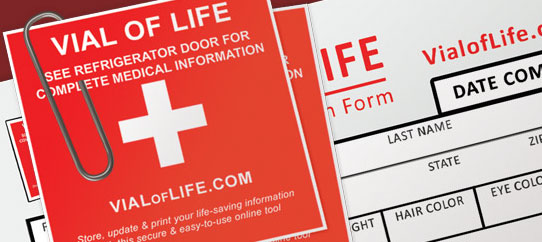
Vial of Life Helps You When You Can’t Speak
The Vial of Life accessory offers essential information to EMTs when you are unable to communicate. This packet, crucial in emergencies, contains all your medical details, aiding faster and more effective treatment if you’re taken to the hospital or emergency room.
Typically, it is attached to the refrigerator door. To set it up, you include information about your medications, allergies, and other health details. EMTs are trained to look for it, and the provider will also remind them to access it. You can also place these packets in other locations like your car, bedside table, or near a phone.
Most medical alert providers offer this service free of charge.
-
Mobile GPS Device Tracking
When choosing a mobile medical alert system, most options come equipped with location tracking technology. Whether powered by GPS, Wi-Fi Positioning Systems (WiPS), or both, this feature enables caregivers, family members, and monitoring centers to quickly locate the user during emergencies—provided the device is being carried.
-
Enhancing Safety for Vulnerable Individuals
Location tracking is particularly valuable for those with conditions like Alzheimer’s or dementia, where the risk of wandering and disorientation is a concern. By offering real-time location information, these devices help prevent dangerous situations and ensure that loved ones can be found quickly if they stray from familiar surroundings.
-
Providing Critical Location Data
Location tracking is particularly valuable for those with conditions like Alzheimer’s or dementia, where the risk of wandering and disorientation is a concern. By offering real-time location information, these devices help prevent dangerous situations and ensure that loved ones can be found quickly if they stray from familiar surroundings.
In short, mobile GPS device tracking adds a powerful layer of safety to medical alert systems. By combining real-time location monitoring with geo-fencing and emergency support, this technology helps protect individuals, offering peace of mind to both users and their loved ones.
-
Wall Buttons are Useful
Wall buttons are a practical and popular addition to medical alert systems, especially for individuals who prefer not to wear a personal device or may occasionally forget to put one on. Many users choose to install multiple buttons—often 10 or more—for comprehensive home coverage.
-
Affordable, Reliable, and Flexible
Wall buttons are not only budget-friendly but also easy to install, requiring no special tools or expertise. Simply stick them where they’re needed. Since they run on batteries rather than needing an outlet, they offer flexibility in placement. Most models feature batteries that last five years or longer, providing long-term reliability.
-
Strategic Placement for Maximum Protection
These buttons are designed to be easily placed in key areas throughout the home, such as bathrooms, staircases, kitchens, and bedrooms. To ensure accessibility, it’s important to position them low enough to be reachable in case of a fall, enhancing safety and usability.
-
Boosting Home Safety
By installing several buttons around the home, you can significantly increase overall security and peace of mind. With their affordability, ease of use, and dependable performance, wall buttons are an excellent choice for anyone looking to enhance their medical alert system.
Look into the products at GetSafe Medical Alert Systems, particularly if you do not want to wear a medical alert button.
-
Importance of Lock Boxes
Wall buttons are not only budget-friendly but also easy to install, requiring no special tools or expertise. Simply stick them where they’re needed. Since they run on batteries rather than needing an outlet, they offer flexibility in placement. Most models feature batteries that last five years or longer, providing long-term reliability.
-
Ensuring Fast and Hassle-Free Access
In emergencies, every second counts. A lock box with a spare key allows emergency personnel to enter your home quickly and without causing damage. Without one, responders might need to force entry through a door or window, wasting valuable time and potentially resulting in costly repairs.
-
Convenience and Coordination with Monitoring Services
Many medical alert providers offer lock boxes as part of their service. The monitoring center keeps the combination code on file and can provide emergency personnel with the lockbox’s location and code when they arrive, ensuring smooth and rapid access.
-
Vial of Life Helps You When You Can’t Speak
The Vial of Life accessory offers essential information to EMTs when you are unable to communicate. This packet, crucial in emergencies, contains all your medical details, aiding faster and more effective treatment if you’re taken to the hospital or emergency room.
Typically, it is attached to the refrigerator door. To set it up, you include information about your medications, allergies, and other health details. EMTs are trained to look for it, and the provider will also remind them to access it. You can also place these packets in other locations like your car, bedside table, or near a phone.
Most medical alert providers offer this service free of charge.
-
Protect Your Home While Staying Safe
A lock box is a simple yet effective tool to enhance your medical alert system. It safeguards your property while enabling emergency responders to focus on what matters most—delivering the care you need without delay.
In-Home Systems vs. Mobile GPS-Enabled Devices
Depending on your mobility and lifestyle, you’ll want to know about the two types of medical alert systems available. It’s important to understand what they are before buying them. Here are a few pros and cons for each system.

In-Home Medical Alert Systems
Pros of In-Home Medical Alert Systems:
- Dependable Home Coverage: In-home medical alert systems are specifically designed for residential use. With a base unit connected to a landline or cellular network and a wearable emergency button device, these systems provide reliable coverage within your home, ensuring peace of mind and quick access to assistance when needed.
- Extended Battery Life: These systems often feature base units that remain plugged into a power source, offering continuous operation without frequent battery recharges. This guarantees that the system is always operational, eliminating concerns about battery depletion.
- Simple Setup and Operation: In-home medical alert systems are easy to install and use. They usually come with clear, user-friendly instructions and can be set up quickly without professional help. Once installed, using the system is straightforward—just wear the device and press the emergency button if needed.
Cons of In-Home Medical Alert Systems:
- Restricted Range: The coverage of in-home medical alert systems is typically limited to your home and its immediate vicinity. If you go beyond this range, such as for a walk or to run errands, the system’s effectiveness may be reduced.
- No GPS Tracking: Unlike mobile medical alert systems, in-home systems usually lack GPS tracking. This means if you need emergency help and can’t communicate your location, the system might not provide accurate information to responders.
- Reliance on Home Infrastructure: These systems depend on a stable landline or cellular connection. Issues like power outages or network disruptions can temporarily disable the system, compromising its reliability.
In-home medical alert systems offer dependable coverage within your home, long battery life, and ease of installation and use. However, they are limited in range, lack GPS tracking, and depend on your home’s infrastructure for connectivity.
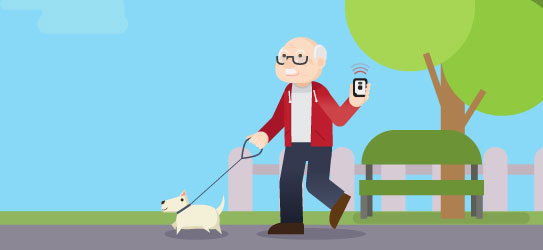
Mobile Medical Alert Systems Including Smartwatches
Pros of Mobile Medical Alert Systems:
- Portability and Flexibility: Mobile medical alert systems, such as portable battery-powered devices and smartwatches, offer protection wherever you go. These systems use cellular technology, allowing you to stay connected and request help even when you’re away from home. Whether traveling, visiting friends, or running errands, mobile systems provide on-the-go peace of mind.
- GPS Location Tracking: Many mobile medical alert systems include GPS technology, enabling emergency responders or monitoring centers to accurately locate you in an emergency. This is particularly helpful if you have a medical condition that could cause confusion or disorientation.
- Wide Coverage Range: Mobile systems operate on cellular networks, offering coverage across a wide range of areas. As long as cellular service is available, you can access the emergency response features of your mobile medical alert system, no matter where you are.
Cons of Mobile Medical Alert Systems:
- Battery Life: Mobile medical alert systems depend on battery power. Depending on the device and usage, frequent recharging may be necessary. Ensuring the device is adequately charged is essential for maintaining its functionality when needed.
- Dependence on Cellular Reception: While mobile systems provide broad coverage, they rely on cellular reception. If you’re in an area with weak or no cellular signal, the system’s effectiveness may be compromised. It’s crucial to verify the coverage quality in your area before selecting a mobile medical alert system.
- Risk of Device Loss or Damage: The portability of mobile medical alert devices means there is a risk of loss or damage. Misplacing or damaging the device could hinder your ability to access emergency assistance when necessary. Taking precautions to keep the device secure and protected is important.
Mobile medical alert systems offer portability, GPS tracking, and wide coverage, enabling you to stay connected and request help even when away from home. However, they have potential drawbacks, including reliance on battery life and cellular reception, as well as the risk of device loss or damage. Additionally, they are generally more expensive and require an upfront device purchase.
Choosing Your Medical Alert
Now that we’ve reviewed five of the top medical alert providers, you have a solid starting point for finding the best system to ensure your loved ones receive fast, reliable assistance whenever needed. These industry-leading choices offer nationwide coverage and advanced safety features to give families peace of mind.
This updated buyer’s guide is designed to help you narrow down your options and select a system that aligns with your budget, lifestyle, and personal needs. To provide the most accurate recommendations, we conducted hands-on testing through mystery shopping—purchasing and setting up the top-rated medical alert systems while thoroughly evaluating their equipment, monitoring services, and ease of use.
Our comprehensive assessment covers the entire customer experience, from initial purchase and sales interactions to service quality after activation. While many medical alert systems offer similar core features, it’s often customer support and reliability that set one provider apart from another. A responsive, friendly, and knowledgeable support team can make all the difference in an emergency.
Not all brands made it into our Top 5 list, but many still offer valuable options. If you’re curious about other providers, additional features, or key decision-making factors, scroll down to check out our Frequently Asked Questions section for more insights.
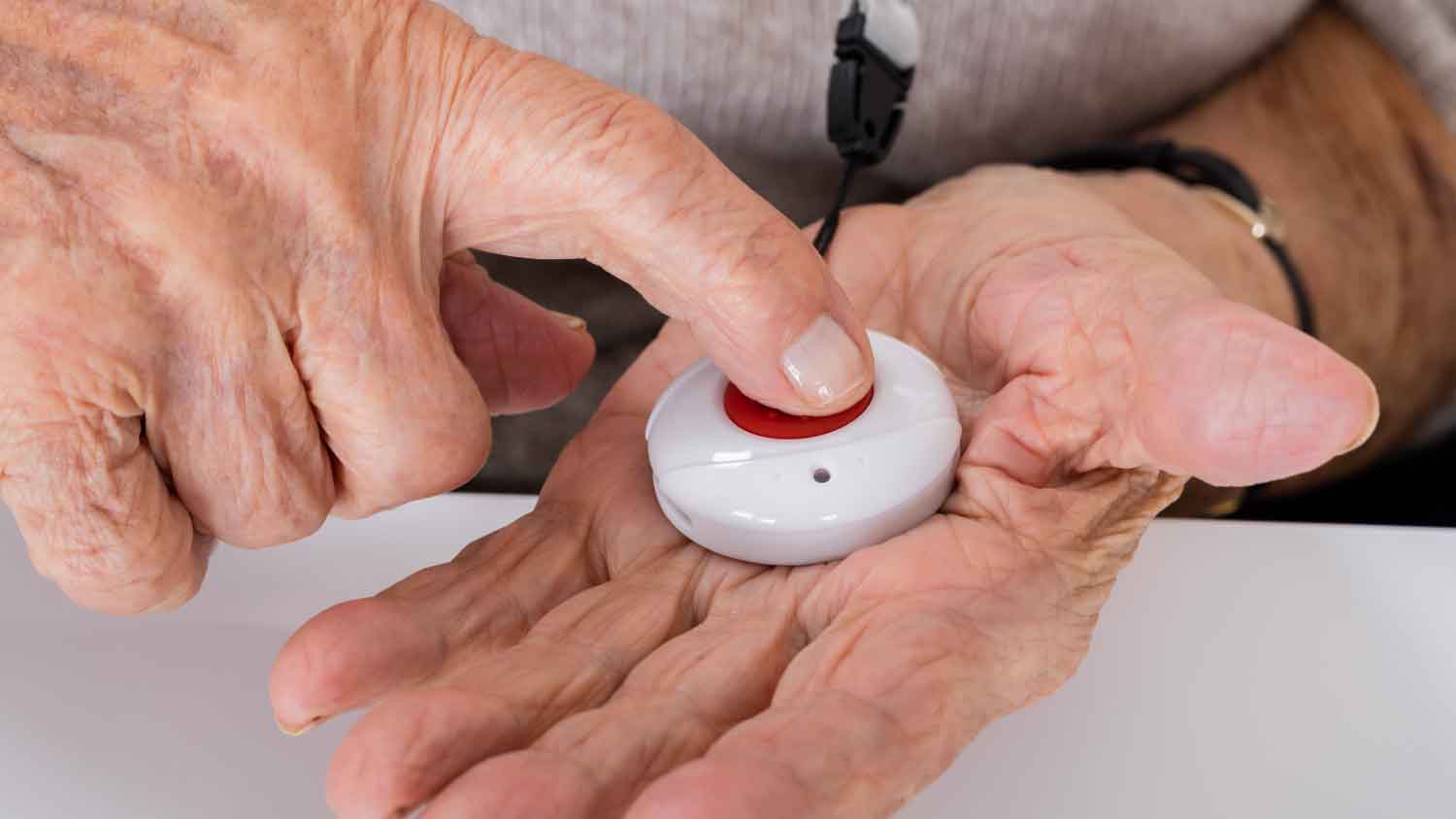
Frequently Asked Medical Alert Questions
A medical alert system can cost from as little as $19.95 per month up to twice that amount or even higher. Typically, optional features such as fall detection can cost an extra $10 per month. Our comparison reviews of the best brands will show you much of this information at a glance. You can buy just the equipment itself with no monthly charges, but this means there’s no 24/7 monitoring, which frequently defeats the purpose – see our article on No Monthly Fee vs Monitored Systems.
While especially beneficial for seniors living alone or individuals with medical conditions, medical alert systems are suitable for anyone desiring quick access to help during emergencies.
Make sure you understand all the charges and fees, including initial equipment cost and the length of contract (we recommend monthly contracts only, not longer term contracts). Know the refund and return policy. Make sure the type of system meets your purpose, whether for in-home protection, mobile portability or both – include all the features you will want, such as fall detection or GPS tracking. Make sure the person who will use the system is comfortable and committed to actually wearing it. Make sure you can transfer your base location easily in case of evacuation, vacation, etc. Our comparison reviews will always include: battery life, fall-detection reliability, monitoring center response time, and total cost.
The three main types of medical alert system are home-based, mobile, and now smartwatch. The pendant style, worn around the neck or clipped on a belt or purse, is the original style of wearable system, both for home and outdoor use, and this has now been supplemented by the advent of the smartwatch, worn on the wrist – see below for more details on smartwatches.
Unfortunately, these types of systems are not covered by either Part A or Part B Medicare plans. However, some private insurance companies and Medicare Advantage plans do provide coverage or discounts for medical alert systems. This means that you must check the details of your coverage because there is no industry standard. To get more information, see Does Medicare Cover Medical Alert Systems.
Many of the companies we review offer discounts for seniors and special offers, including for AARP members. Check our overview of Discounts For AARP Members.
While AARP as an organization strongly recommends that seniors use medical alert systems, it does not specifically endorse any one particular product. The organization does recognize that these systems can be lifesaving for seniors. And some PERS providers even offer discounts for AARP members. See Medical Alert System Discounts for AARP members.
The mobile and smartwatch medical alert systems we recommend do not need to work with your smartphone. They are standalone systems. Among medical alert smartwatches, only the Apple Watch requires a phone, which is one reason it was not our pick for Best Medical Alert Watch.
In-home systems are designed to work with most of the phone services, using an existing landline service if one is present, integrating with cable providers and VOIP services, or connecting directly to the cellular network – the mobile versions use the cell network exclusively of course. Your coverage is important to confirm before you choose, especially if you live in a rural area. Note that the base station will stay connected with your home device if you’re outdoors, for a variable distance that could be as far as 1,000 feet away – check this range before you buy if you expect outdoor usage (not to be confused with mobile travel of farther distances).
Yes, many systems offer mobile options with GPS tracking, allowing users to access help both at home and on the go. These mobile systems can pinpoint the user’s location during an emergency.
If the help button is pressed unintentionally, simply inform the operator when they respond that it was a false alarm. Accidental activations are common, and operators are trained to handle them.
Many medical alert buttons are designed to be waterproof, allowing users to wear them in the shower or bath—common sites for falls. However, it’s essential to verify the waterproof capabilities of specific devices with the provider.
Not necessarily. While some systems operate via landlines, many modern medical alert systems use cellular networks, eliminating the need for a landline. It’s important to confirm that the cellular service used by the system has adequate coverage in your area.
Battery life varies by device. The battery in the wearable device can last from 24 hours up to about four days. Generally speaking, medical alert watches have a shorter battery life than mobile medical alert systems. In-home medical alert systems plug into a wall outlet and use a backup battery in case of a power outage.
Learn the battery life before you buy, and see our guide to Mobile Device Battery Life for more. (Note that a smartwatch that’s paired with a smartphone will require charging both devices adequately to function.)
Most base units have backup batteries that allow the system to function for several hours during a power outage. Mobile units, which are battery-operated, are unaffected as long as their battery is charged.
Monitored systems connect users to a 24/7 call center staffed by trained operators who can dispatch emergency services or contact family members. Unmonitored systems typically alert a list of pre-programmed contacts directly when the help button is pressed.
We are strongly in favor of monitored medical alert systems. Professional monitoring means that trained operator with your medical history on-file who can communicate with emergency responders when you may not be able to speak.
To learn more, read our reviews and assessments of top “no fee” medical alert systems.
Yes, Walmart does offer these products. There you can find both systems that are monitored or unmonitored. However, it’s a good suggestion to shop around for the best products for you at the best prices. This includes shopping and gathering information online. For more help, consider this article: Buyers Guide to Walmart Medical Alert Systems.
This is an option that many medical alert providers offer. And it is one that most subscribers need. Every 19 minutes, someone dies as a result of a fall. Falls can be serious—and costly. In fact, the expected healthcare cost related to falls in 2020 was $67 billion.
Picking the right one for you depends on the options you are looking for. Understand the reliability of the system and the likelihood of false alarms. Also consider the type of response that happens when there is a fall or an emergency arises. This means determining who should be contacted when there is an alert, and what the response level will be if a fall is detected. For more information on selecting fall detection systems, look here Compare the Best Medical Alerts with Fall Detection.
You’ll find Medical Guardian listed in many other comparison sites as a top rated medical alert provider. Simply put, Medical Guardian charges a very high premium for servies that aren’t any better or worse than our top five providers. In fact, many of Medical Guardian’s products can be found from other brands for far less. Both the equipment and monitoring center are identical so paying more won’t get you anything extra.
Some providers allow multiple users to connect to a single system by adding extra wearable devices. However, this may involve additional fees. It’s best to confirm this option with the provider.
Most medical alert companies offer their services without long-term contracts, allowing cancellation at any time.
It’s crucial to review the terms and inquire about any potential setup, activation, or cancellation fees before committing.
Sources
- https://www.ncbi.nlm.nih.gov/pmc/articles/PMC4499195/
- https://www.visn8.va.gov/VISN8/PatientSafetyCenter/research.asp
- https://visual.ly/community/Infographics/health/risks-costs-senior-fall-injuries
- https://www.cdc.gov/falls/data/falls-by-state.html
- https://tma.us/programs/fivediamond/
- https://www.cdc.gov/falls/facts.html
- https://www.ncbi.nlm.nih.gov/pmc/articles/PMC5699193/
- https://www.performancehealth.com/articles/the-impact-of-falls-on-the-elderly-infographic
Table of Contents:
- How We Tested: Hands-On Testing + In-Depth Reviews
- Best Medical Alert Systems Comparison Chart
- The Best Medical Life Alert Systems of 2025
- How We Chose the Best Companies
- Find the Best System for Your Needs
- Budgeting for Your Medical Alert System
- Here's How a Medical Alert System Works
- Life-Saving Medical Alert Add-Ons. Widen Your Safety Net!
- In-Home Systems vs. Mobile GPS-Enabled Devices
- Choosing Your Medical Alert
- Frequently Asked Medical Alert Questions
- Sources

